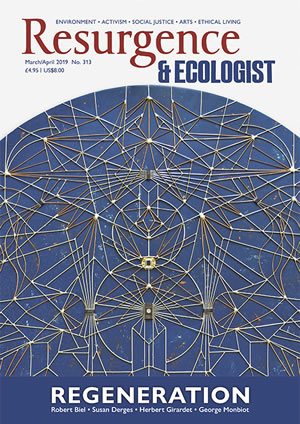The Golden Thread is not an overtly ‘political’ book. It fits into the ‘history of’ genre that has produced many readable, accessible texts in recent years, covering everything from Mark Kurlansky’s Cod to Yuval Noah Harari’s wildly successful Sapiens.
Feminism is gently drifted towards the reader in The Golden Thread. Kassia St Clair makes the undoubtedly true claim that the production of clothing has traditionally been women’s work – as well as children’s. For this reason it has always been undervalued and little considered – hence the traditionally derogatory name for single women, derived from spinning. She also nudges us to note the crucial role of slavery in the explosion of industrialisation and consequent wealth of the UK and the US, quoting George Washington as saying, in 1789: “The increase in this new material must be of almost infinite consequence to the prosperity of the United States.”
This book could almost, at times, be put into the ‘subaltern history’ genre. But the bulk is taken up with entertaining, enjoyable anecdotes. It leaps from fascinating prehistory – a 2013 discovery suggests that the Neanderthals made string 90,000 years ago, while the earliest known fabric dates back 28,000 years – to the complexities and dangers of the moonshot spacesuits. All this via the revelation that Scott’s fatal Antarctic expedition chose its wardrobe badly compared to its successful, and surviving, Norwegian rivals, who relied on the traditional clothes of the Inuit.
Sometimes what’s included appears distinctly scattergun, although this reader couldn’t be sorry about that in some cases. It was fascinating, if stomach-churning, to learn that Senator James Henry Hammond, a particularly vicious slave-owner from South Carolina, was also a social pariah who had abused four teenage nieces, none of whom ever subsequently married, because “their reputations were ruined”. A reminder that #MeToo might be relatively new, but the behaviour is not.
While it isn’t how this book is presented, it is possible to use it to think deeply about our modern world and how we got to the environmentally and socially disastrous state of ‘fast fashion’. St Clair links the tragic events of Rana Plaza to a long history of multinational exploitation and disregard for workers’ health, noting that in the 1960s the major firm Courtaulds was still denying the harm done by the carbon disulphide used in the manufacture of rayon and other artificial fibres. And it goes back to even before the multinationals. Lace was the luxury material of the early modern era, and consumers like Elizabeth I and the 17th-century leader of French fashion le Comte de Cinq-Mars spent, literally, fortunes on it. The women and children who made it often starved or froze on their inadequate pay, while the inhabitants of orphanages and convents worked as effectively unpaid slave labour.
St Clair also provides a short but solid round-up of the disastrous impacts of the modern fashion industry. Synthetics (in other words, plastics) make up 60% of the global fibre market, St Clair tells us. In 2016, 96 million tonnes were produced. They constantly shed fibres, probably the world’s biggest single pollutant, something that the Women’s Institute is starting to take action on with its End Plastic Soup campaign.
Whatever the material, overproduction is enormous and massively damaging. In 2010, 150 billion garments were made – enough for 20 new items for each person on the planet.
Hidden in here is a possible alternative history, and a way of guiding our future choices about the clothing we wear. As the technology of mass production developed, it could have been used to ensure that the remaining workers got paid a decent wage and their health was protected. Instead, they continued to be exploited to produce ‘cheap’ clothing, with a huge percentage of profits going to advertising to induce consumption. It’s telling that St Clair notes just how much money went into promoting what we now know to be environmentally disastrous synthetic fibres.
The Golden Thread is worth a read for informing your political thinking, and it will entertain you far more than most ‘political’ books.







